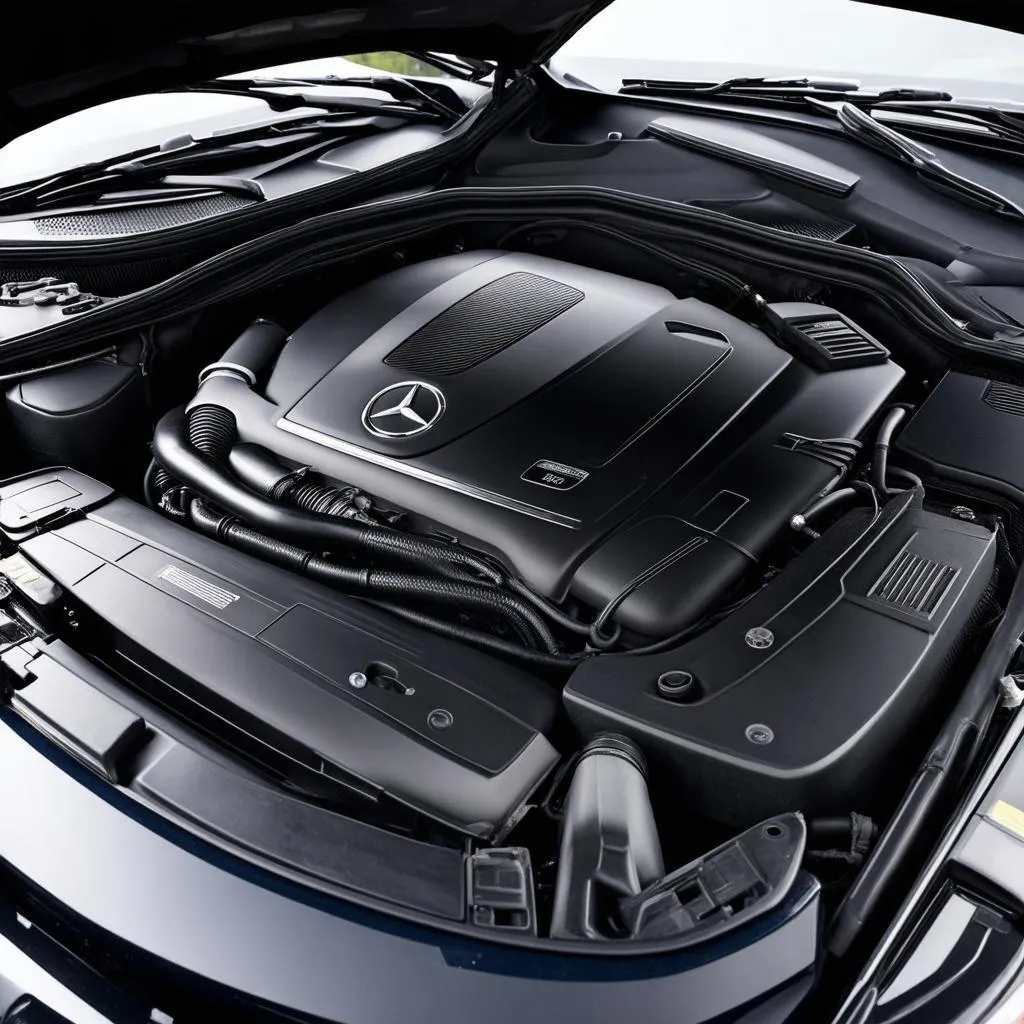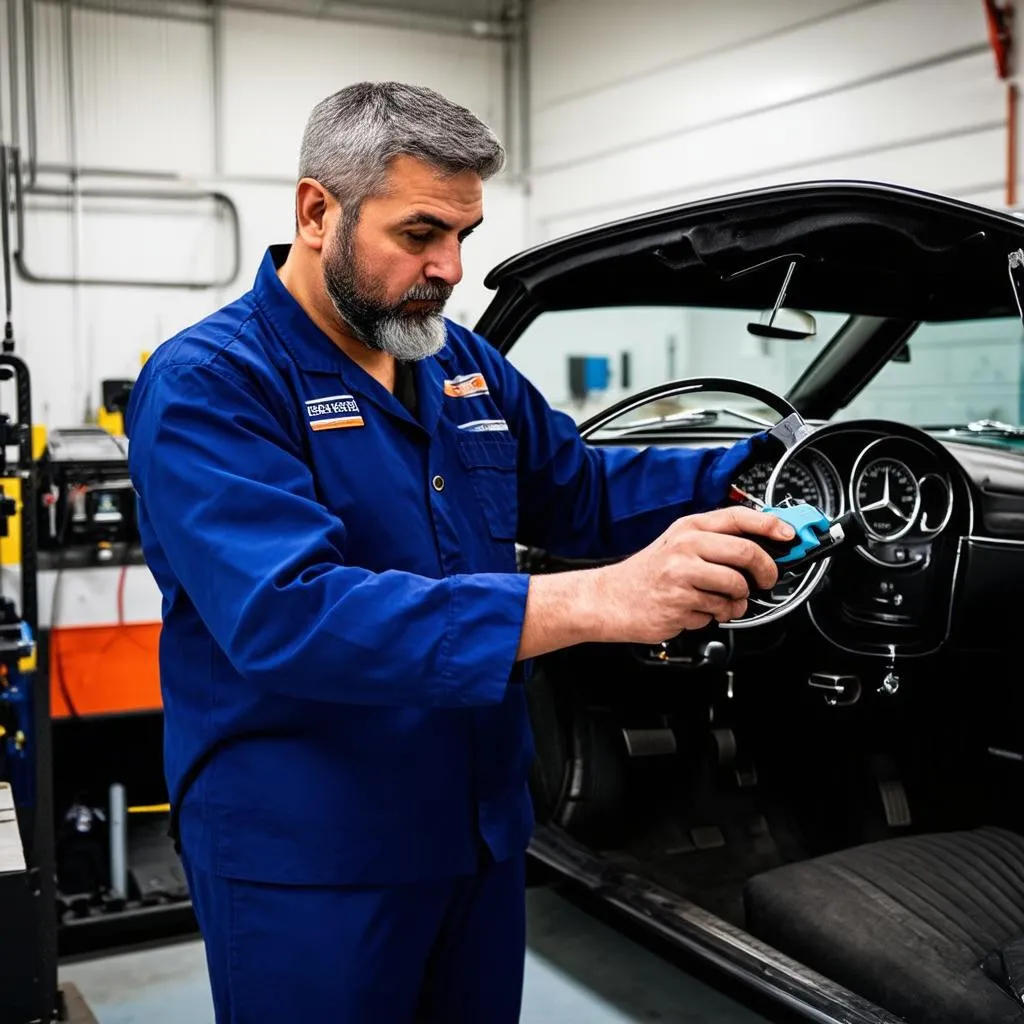Have you ever felt like you were speaking a different language when trying to diagnose your Mercedes? You’re not alone! Many Mercedes owners find themselves scratching their heads when it comes to the infamous “2-digit engine code” and its relation to the more familiar OBD (On-Board Diagnostics) system. It’s a common point of confusion, and today, we’re diving deep to demystify the process.
 Modern Mercedes-Benz Engine Bay
Modern Mercedes-Benz Engine Bay
Decoding the Jargon: What Does it All Mean?
Before we jump into the “how-to,” let’s break down the terminology:
1. Two-Digit Engine Code: This code, often found on older Mercedes models (typically pre-1996), is a simplified identifier for your engine type. Think of it as a shorthand used by mechanics back in the day.
2. OBD (On-Board Diagnostics): This system, standard on most vehicles since the mid-1990s, acts like your car’s internal doctor, monitoring emissions, engine performance, and other crucial systems. It communicates through a standardized port (usually under the dashboard) and uses specific codes to flag issues.
The Crux of the Matter: Here’s the catch – you can’t technically “change” a 2-digit engine code to OBD. They are two different systems from different eras of automotive technology.
Bridging the Gap: Understanding the Real Question
The confusion often stems from wanting to access engine diagnostic information on older Mercedes models using modern OBD scanners. You might be wondering:
“Can I use a standard OBD scanner on my classic Mercedes?”
The answer depends on the year of your Mercedes. Models from the early to mid-1990s might have a transitional system, a hybrid between the older 2-digit codes and the newer OBD-II. However, if you’re driving a true classic, chances are you’ll need a specialized scanner that can communicate with its unique systems.
Getting Down to Business: How to Access Diagnostics on Your Mercedes
- Identify Your Mercedes Model Year: This is crucial. Pre-1996 models will likely require a different approach than later ones.
- Consult Your Owner’s Manual: Your manual is your best friend. It often contains information on diagnostic procedures specific to your model.
- Seek Expert Advice: If you’re unsure, don’t hesitate to consult a qualified Mercedes mechanic or specialist. They have the experience and tools to diagnose your vehicle accurately.
FAQs: Addressing Common Concerns
Q: Can I convert my older Mercedes to OBD-II?
A: While technically challenging, some companies offer conversion kits for certain models. However, it’s a complex process best left to professionals.
Q: Where can I find a reliable mechanic specializing in classic Mercedes vehicles in [Your City/State]?
A: Online forums and Mercedes enthusiast groups are great resources for finding reputable mechanics in your area.
 Experienced Mercedes Mechanic Using a Diagnostic Tool
Experienced Mercedes Mechanic Using a Diagnostic Tool
Need More Help? We’re Just a Message Away!
Diagnosing car problems can be frustrating, especially with the intricacies of a Mercedes. If you’re still feeling lost in the world of engine codes and OBD systems, don’t worry! Our team of automotive experts is here to guide you. Contact us via WhatsApp at +84767531508 for personalized assistance with your Mercedes diagnostic needs. We’re available 24/7 to help you get back on the road with confidence.
Explore Further:
- [Link to an article on your website about common Mercedes engine problems]
- [Link to an article on your website about choosing the right OBD scanner]
Remember, knowledge is power when it comes to car maintenance. We encourage you to leave your questions and comments below and share this article with fellow Mercedes enthusiasts! Let’s keep the conversation going.